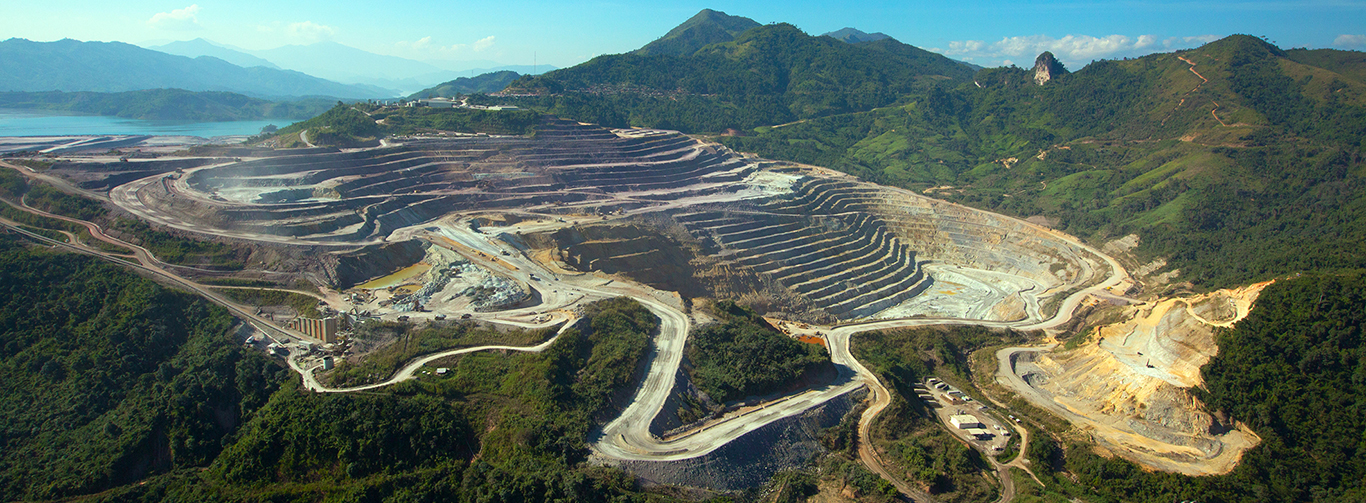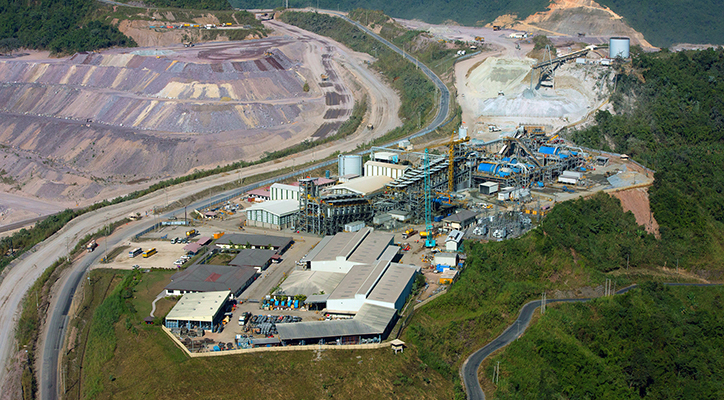Open-pit mine with complex geological conditions
The Phu Kham open-pit copper and gold mine is located about 100 kilometers northeast of Vientiane, the capital of Laos. Due to weathering, alteration, fracture, folds and other reasons, the geological conditions of the deposit are very changeable. The geological composition is a complex heterogeneous mineralized layer of gold-copper network veins and skarn mineralization. The contact between weathering and groundwater level has formed a soft leaching zone and an overlying transition zone with secondary copper mineralization dominated by epigenetic chalcocite and clay-rich coal gangue. The rock body strength and weathering degree of the entire deposit vary greatly, and hard rocks are found in the deep layers of the ore body.
The mine has a large number of conventional open-pit mine feed equipment, as well as process equipment consisting of crushing, grinding and flotation processes to recover copper and precious metals. The current annual output is 19.5 metric tons. The crushing section is a single-stage crushing consisting of a gyratory crusher. The grinding circuit includes one semi-automatic mill and two parallel ball mills, one for each closed circuit and equipped with a cyclone. The next flotation circuit includes rough selection, regrind and several selection stages. The product is 22-25% copper and gold concentrate, 7g/t gold and 60g/t silver.
The Phu Kham copper-gold deposit in Laos is an extremely heterogeneous ore body. Mineral deposits have complex and changeable mineralogical, geological and geotechnical properties, which will affect mine output and metallurgical properties. As the mining depth increases, the situation will become more complicated. Therefore, potential capacity constraints will bring risks to long-term profitability.
In 2012, with the help of Metso's process technology and innovation team, Phu BIA Mining Co., Ltd. began to implement capacity forecasting and optimization projects to evaluate how to maintain target production and profit within the mine's lifecycle (LOM). The goal is to find ways to increase production while processing hard ore, develop production forecasting models, and determine if and when changes to the crushing and other processes are needed to maintain the target production during the mine’s life.
The project involves ore characterization; using Metso's SmartTag™ ore tracking system to evaluate in detail the blasting and crushing operations related to ore characteristic data; and to develop specific field models of the blasting and crushing process. Integrate these models to obtain optimization tools for the entire production process and capacity prediction.
The "recipe" for effective blasting
The optimization process starts with qualitative ore to determine the same mine area in the entire blasting and crushing process. With a given blasting design, similar raw ore (ROM) fragments are formed in the ore in the domain. By controlling the fragments of the original ore, the mine can be increased in production.
One of the main goals is to develop strategies to maximize mill output to maintain the target output during the mine's lifetime (LOM) while processing hard ores. As expected, the blasting model and simulation show that dense blasting holes and increasing the effective coefficient of explosives can greatly increase the amount of fine particles produced by blasting. In addition, reducing the length of the blasthole sealing mud can also produce more blasting fine particles and reduce the maximum particle size of the ore. The reason is to increase the blasting energy of the blasthole sealing mud position. These simulations show that by optimizing the blasting parameters, the amount of fine powder can be increased and the maximum particle size of the raw ore fragments can be reduced, thereby increasing the output.
Simulations and specific blasting designs have been carried out for each mining area, so as to form an optimized blasting design "good recipe" for each mining area. Use these "good recipes" to achieve a more consistent and optimized downstream process feedstock particle size distribution, and improve output, process stability and efficiency. Following these methods can also avoid excessive blasting of soft minerals, thereby reducing energy consumption and costs, and preventing the generation of a large number of ultra-fine particles, so as not to adversely affect certain downstream processes.

